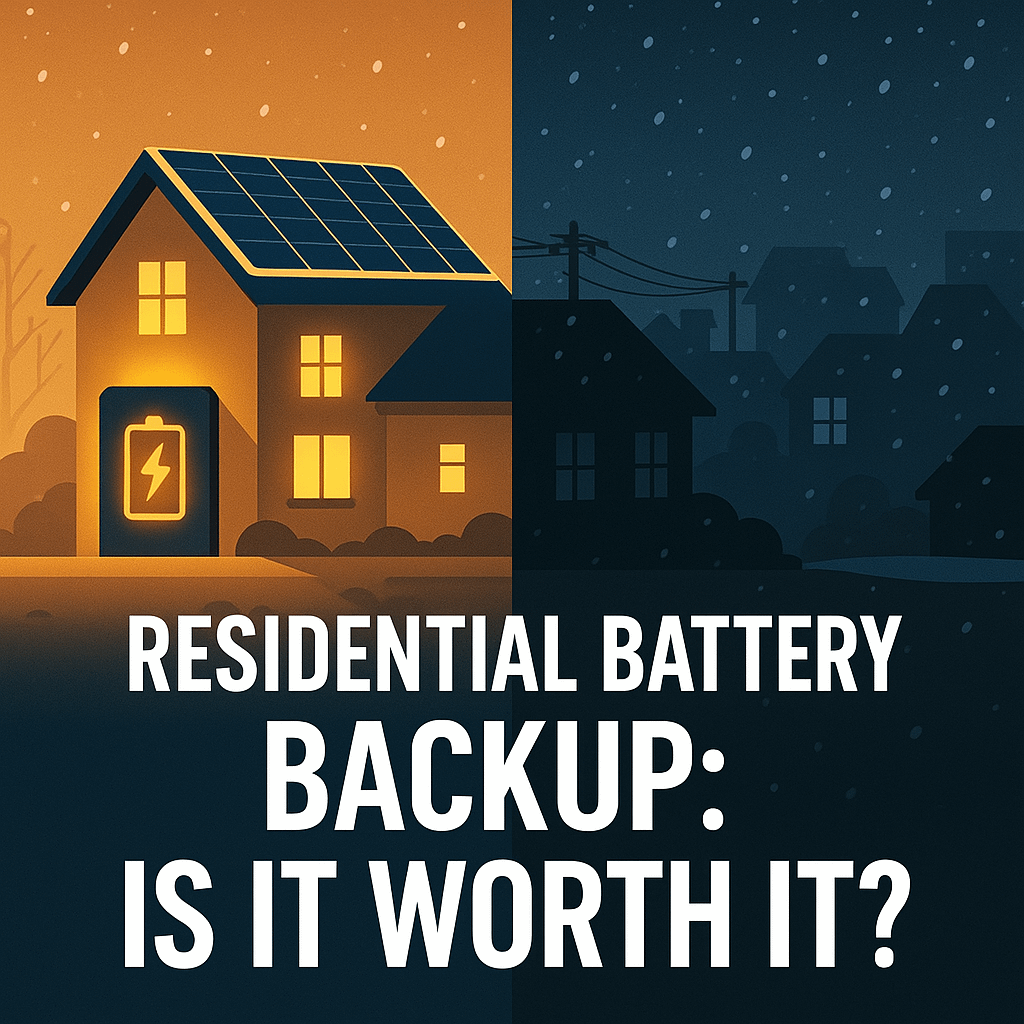You may have heard the old saying, “a penny saved is a penny earned.” Well the same is true when it comes to power generation. A kilowatt-hour saved truly is a kilowatt-hour earned.
Whether you’ve invested in your very own solar power generation plant (which you should), or if you pay for the privilege of using your utility’s generator, shoring up inefficiencies in your home can make a huge impact on your energy use.
Did You Say “Nega” watt?
That’s right! Negawatt is a term that was coined by Amory Lovins of the Rocky Mountain Institute and is simply defined as saved watts.
His paper entitled; Negawatt Revolution was published in 1990, making it only that much more interesting to look back at today. In it, Lovins explained that we could save up to ¾ of our energy use by implementing the top 1,000 energy saving products that were currently available on the market. He further argued for the creation of negawatt markets to encourage a migration towards these products.
So how have we done? I’ll call it a mixed bag. In the last three decades we have certainly made tremendous negawatt gains in many electronic appliances and devices. But some of our biggest opportunities continue to be the biggest energy leaks.
Thinking Out Outside the Box
Nothing tickles my nerdiness as much as big technological improvements found in places people aren’t really looking. It’s the scientific equivalent of finding a nice wad of cash in your couch or laundered jeans.
For example, I recently read about a clever solar panel cleaning technology developed at MIT. First, a thin, clear, electrically conductive film is installed over the face of a solar panel. An electrically charged rod is then swept over the panel, which imparts a charge on dust and debris particles on its face. The charged dust and debris particles are then repulsed from the face of the panel by energizing the thin film with an applied voltage.
If this relatively simple concept were deployed on utility scale solar plants in the sandy but sun rich deserts, it would result in substantially higher output. A panel’s output can easily be cut by 30% or more if the sun’s rays are obstructed by dust and debris. This system not only maximizes panel output power, but it also negates the need for billions of gallons of water to be pumped long distances through the desert just for washing the panels.
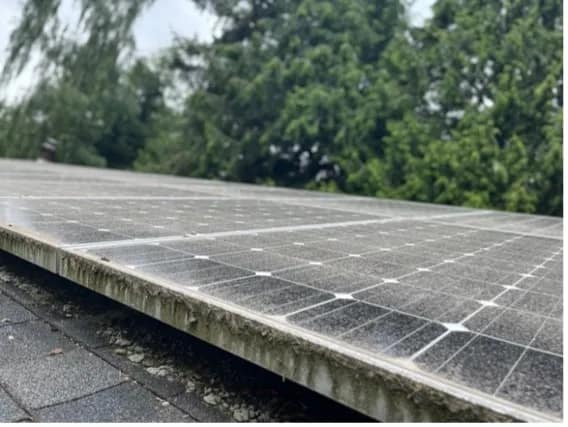
That’s a Huge Gain!
If a solar cell manufacturer announced a process that resulted in a sudden 30% improvement in efficiency, it would be major news. Even people that don’t care would learn about it. But here, a relatively simple process has been developed which will achieve the same end. And let’s just say it probably won’t go viral in quite the same way.
Check Your Couch Cushions
So, we aren’t scientists at MIT (unless you are, in which case, welcome!), and we aren’t likely to develop anything as intricate as their solar panel cleaning system. But efficiencies on the same order or higher can be found by making simple, and in some cases, inexpensive changes.
The wads of cash you’re looking for are efficiency upgrades that cost less than the savings they produce. Who knows, you may find improvements even more substantial than those smarty pants folks at MIT did.
Thermal Loads
One thing you learn when sizing solar power systems is thermal loads are super power hungry. If you need to heat or cool a space, or cook food, for example, that equipment will account for a heavy share of your solar system sizing requirements. Eliminating these loads can dramatically reduce the size of your system. But rather than eliminating them, what if you could make them less “hungry”?
It wouldn’t be unusual for your heating or cooling system to account for 2/3rds of your power requirements. Reducing the run time on that equipment could mean major negawatts. With some simple fixes you can ensure valuable energy isn’t wasted.
Low Hanging Fruit
Windows and walls are the worst… or they can be, if you don’t make them your friend. The key to thermal negawatts will be trapping heat in the winter, and minimizing sun intrusion in the summer. Insulating your attic and walls is an effective way to stop your comfy air from leaving your home. Preventing the high, hot summer sun from turning your home into a greenhouse is an effective strategy for staying cool in the summer.
But How?
There are several ways to accomplish this. The most convenient time to do it is during building construction. Some easy targets in that case are:
- Super-insulating your walls and roof structure.
- Facing large windows towards the sun (south if you’re in the northern hemisphere), with an overhang that allows maximum sun through in the winter but blocks the high summer sun.
- Use polished concrete flooring where the sun lands in the winter to serve as a thermal battery, storing and releasing heat throughout the day and night.
Existing Homes
Unless you’re a builder, it’s unlikely you’re in the process of constructing a home. So, what are some things you can do to your existing home? Well, I recently took care of some efficiency issues in my own home. And to show you just how impactful our windows can be on the temperature of our home, I took several measurements under different conditions and I think you might be surprised what I found.
Glass Plates of Fire
Up until recently, my room got HOT in the summer. My bed is adjacent to a sliding glass door that faces directly east. In the morning, the sun rises and spits pure fire at my door, turning it into a giant glass hotplate. Seriously, on a 72-degree summer morning that thing was cooking my room at 100 degrees by 9 am.
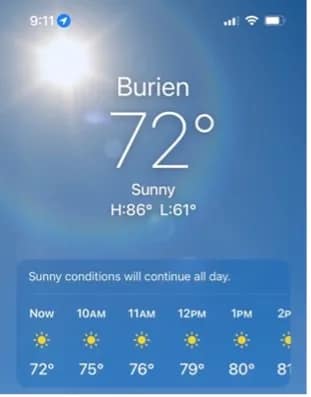

I have a heat pump, which means I get the added benefit of air conditioning, and my home is conditioned to 71 degrees F. A thermometer on my headstand shows 76 degrees… it’s not even 9:30 am.
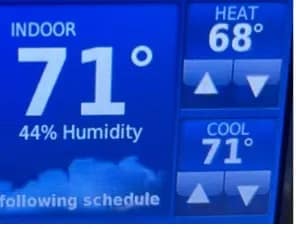
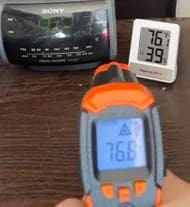
The sheets are as hot as the glass is!
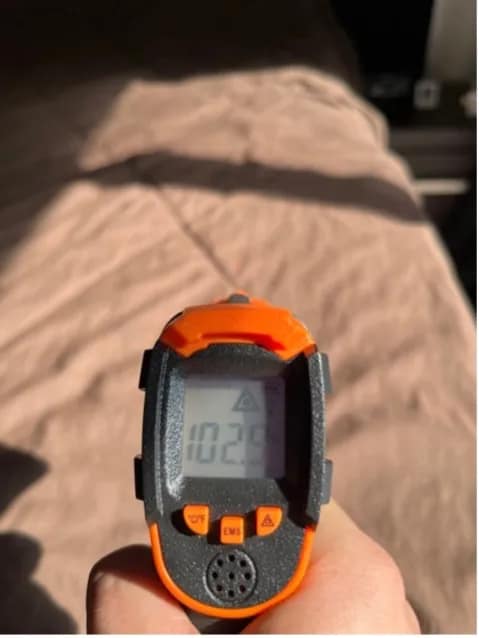
Granted, the curtains are open. Surely closed curtains will fix it!

Well, I guess not… You can’t see it in the picture, but on the other side of those blackout curtains is a thin white sheet. The purpose of the sheet is to prevent the dark curtains from absorbing too much heat… Tough luck. As you saw, the curtain is laying up against a 100-degree surface. The curtain radiates heat and makes sleep almost impossible. Not only that, but it was causing my heat pump to work overtime.
Note: As an Amazon affiliate, I earn from qualifying purchases.
Keepin it Cooleroo
In come Cooleroo Shades. Wow.
Have you ever completed a simple fix that solves an irritating problem so completely that you’re almost annoyed because you didn’t do it long ago? Well, that’s what this was like. The shade w as less than $100, was super simple to install (3 brackets, 6 screws total) and made a whole world of difference.
as less than $100, was super simple to install (3 brackets, 6 screws total) and made a whole world of difference.
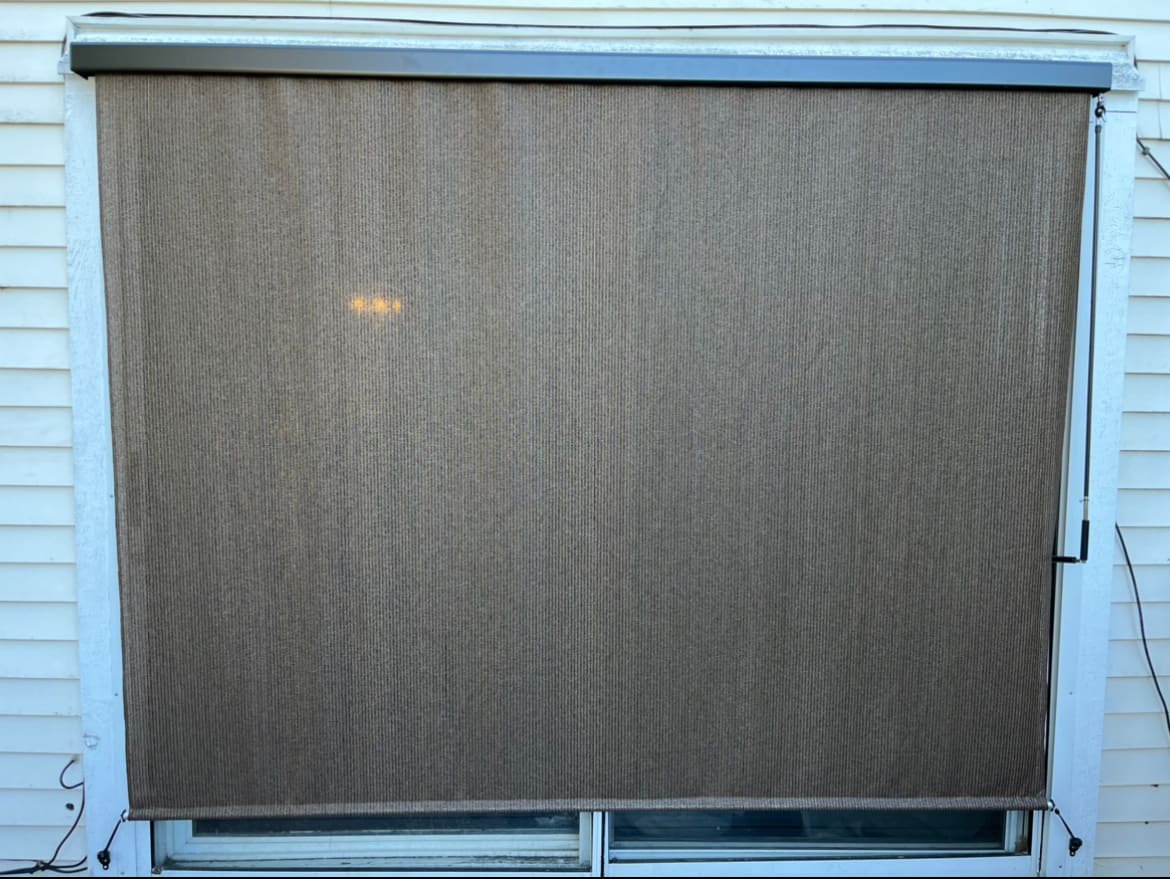
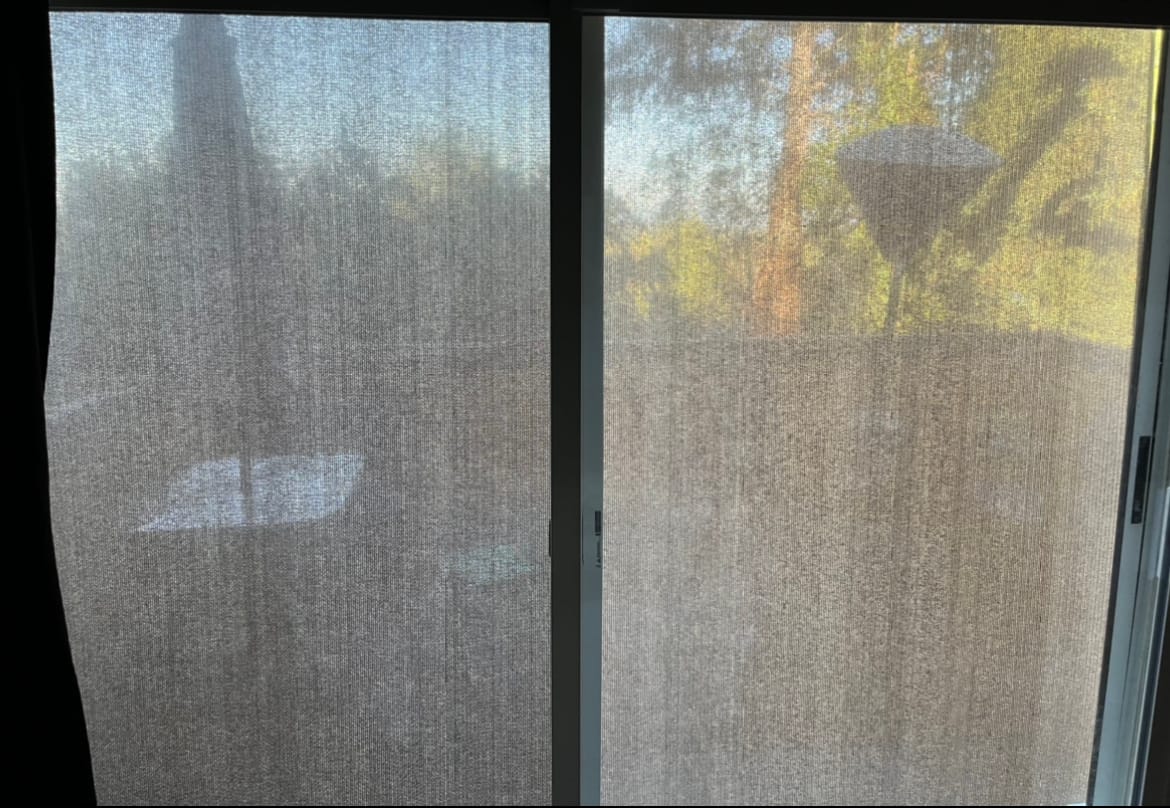
I installed these shades just before a heat wave. And I am so thankful I did! It turns out we would brake a record for most consecutive 90-degree days in Seattle, at six. Don’t laugh at us if you live down south, we aren’t used to it. Our homes aren’t built for it and many of us don’t have AC. But the impact this shade had was everything I hoped for.
The Coolaroo drops the temperature of the glass almost 20 degrees. With the inside curtain left open, the ambient temperature stays within two and a half degrees as the rest of the house. This room is in the opposite corner of the home as the heat pump.
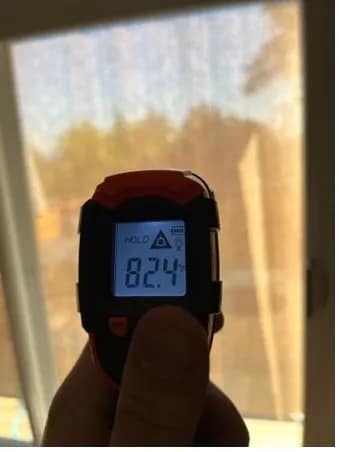
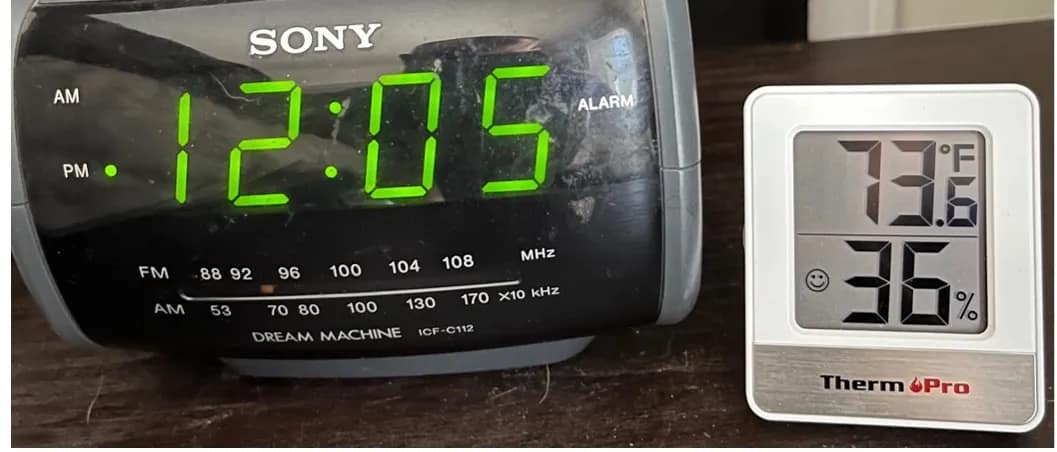
The Empty Walls
While I was happy with the frugality and simplicity of my Cooleroo fix, I knew I wasn’t done. There was another problem I’ve been putting off since I bought my home. As I mentioned above, my room is on the opposite side of the house as my heat pump.
This side also happens to be an addition. And whoever added this side of my home, well I don’t have nice things to say about them right now.
It has been obvious something was up since we moved in. The summers were awful hot. And the winters are see-your-breath cold at times in my bedroom. I added a small heater with a timer to make falling asleep a little more pleasant. The room underneath my bedroom was the same way.
So, we called RetroFoam. I am not affiliated with RetroFoam, but I do recommend them and am incredibly happy I gave them a call. The cost to retroactively (post-construction) insulate an entire home is between $2,000 to $5,000 depending on the size. They’re in and out in a handful of hours and leave no trace once they’re gone.


To insulate your home they start by drilling small holes between the studs in your wall. Then they shove a foam injecting tube through the hole up to the top of the cavity and fill it as they bring the tube out. Then do the same at the bottom. A video is worth a trillion words though, right?
When the representative told me somewhere in the neighborhood of 40% of the homes they service in our area have empty walls, I was a bit surprised. I thought my insulation was probably garbage (not literally), but not completely absent. Well, it turns out both were true.
Some of the holes were as empty as my cookie jar (I love cookies).
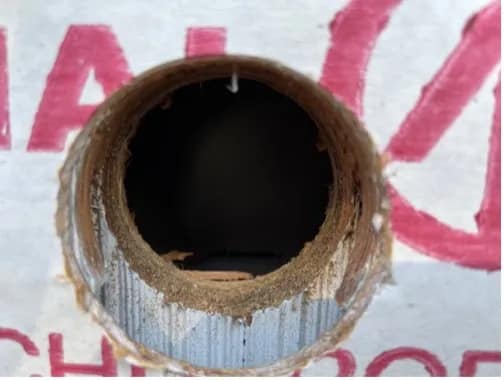
The holes that did have insulation, were trash. What was that insulating?!
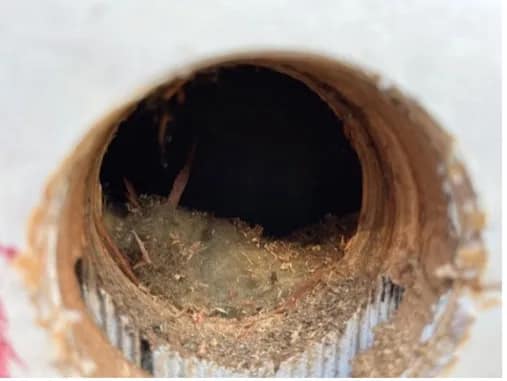
Now my walls are completely filled and ready to keep heat trapped in the winter. This will have a significant impact on my energy use. I’m excited to follow up in a year and see what the final impact is.
With updated insulation and the added shade, my bedroom temperature now tracks the temperature of the rest of the house within a degree. Come winter, we’ll get to see the real impact of these negawatts! I’ll follow up..
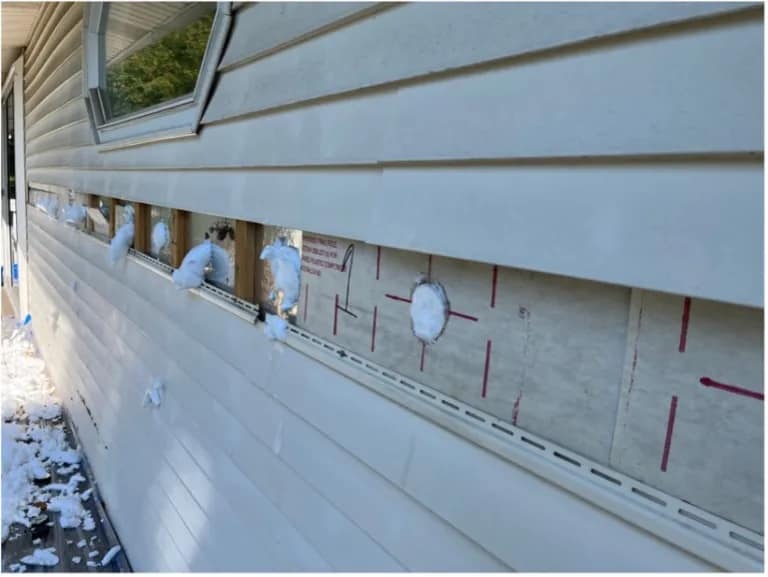
Summary
Saving power is just as good as generating it. We’ve come a long way since the days Amory Lovins described the Negawatt Revolution, but we certainly aren’t there yet. Available efficiencies continue to offer plenty of opportunities for big savings. And when you perform these upgrades, not only do they pay for themselves, but they can make you more comfortable too.
Tell us about your negawatts! What are some creative ways you save energy?
Thank You
Thank you for checking out Evergreen Off-Grid! Please drop a comment and let us know what you think! Or shoot us an email at info@evergreenoffgrid.com.



